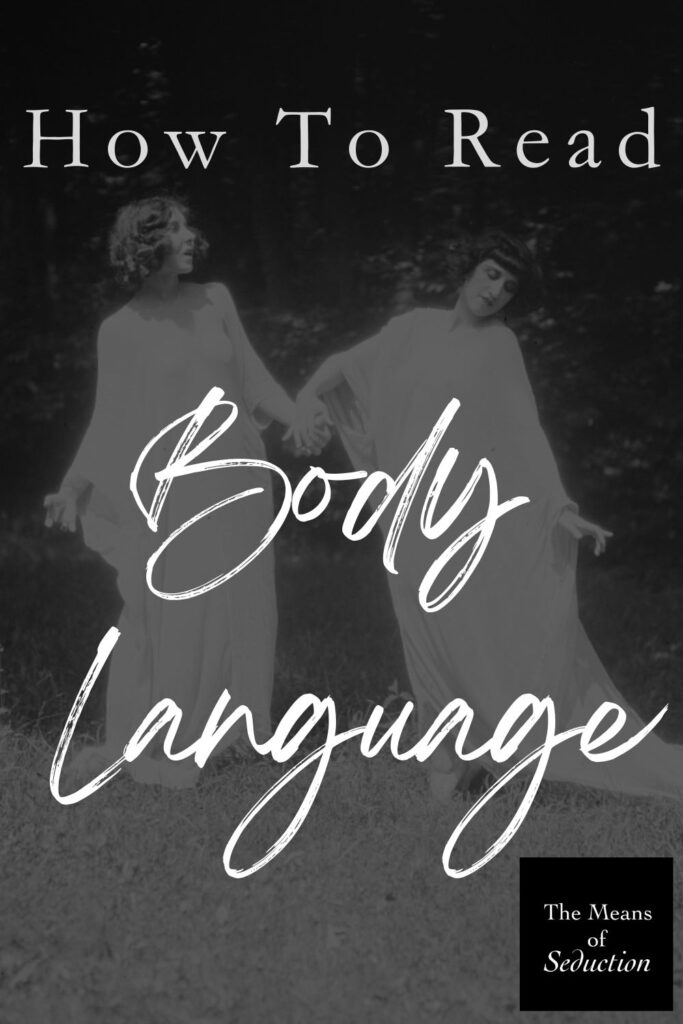Mastering the Art of Reading Body Language
In a world where effective communication and understanding are of paramount importance, the skill of deciphering non-verbal cues stands as an asset. I invite you to embark on a journey into the fascinating realm of decoding unspoken messages. The Means of Seduction seeks to equip you with insights that will help you better understand the thoughts, emotions, and intentions of those around you.
Body language, a universal form of expression, transcends cultural barriers and holds the potential to significantly enhance various aspects of life, from personal relationships to professional interactions. Keep reading for the 10 Dynamic Techniques for Mastering Body Language.
The Art of Observation
This article begins by highlighting the importance of keen observation, encouraging you to pay attention to the subtleties in a person’s posture, gestures, facial expressions, and tone of voice. By honing this skill, you can uncover hidden truths and establish stronger connections with others. Together, we will explore the 10 Dynamic Techniques for Mastering Body Language such as micro-expressions, proxemics, and paralinguistics and empower your ability to spot subtlety.
Practical Application & Ethical Considerations
In this article “10 Dynamic Techniques for Mastering Body Language”, I aim to provide practical guidance, which is to be morally managed by the practitioner and used responsibly, as well as ethically, in said practice. It is imperative that The Means of Seduction firmly underscores these ethical considerations and its unwavering commitment to promoting kindness and respect.
Respecting other people’s personal boundaries while developing your interpersonal skills and enhancing your seductive prowess is not only possible but preferred. In fact, betraying trust and invading other people’s space is the fastest way to undue a positive impression and misrepresent yourself. Please be cautious, kind, and appropriate when studying others around you and applying these 10 Dynamic Techniques for Mastering Body Language.
Now, let’s begin…

The 10 Dynamic Techniques for Mastering Body Language:
1. Observation:
Begin by keenly observing a person’s posture, gestures, and facial expressions.
- Example: For instance, notice if someone is leaning forward with open body language during a conversation, indicating his or her engagement and interest in you and what you are saying. Or observe how someone’s relaxed shoulders signal comfort and trust, indicating genuine interest and enjoyment in your company.
2. Baseline Assessment:
Establish a baseline of a person’s normal behavior to spot deviations.
- Example: If someone typically maintains steady eye contact but suddenly avoids it, it could be a sign of discomfort or deception. Consider how a person’s usual speaking pace may suddenly accelerate or slow down during a conversation. A significant deviation from their baseline speech pattern might signal heightened emotions, nervousness, or a desire to emphasize a particular point.
3. Micro-expressions:
Pay special attention to fleeting expressions across a person’s face that might reveal their more subconscious, hidden emotions.
- Example: A quick flash of anger on someone’s face when they’re discussing a sensitive or often controversial topic can provide valuable insights into their temper, passions, insecurities, and fears. In a seductive conversation, watch for subtle micro-expressions when you compliment or express attraction. A brief smile or a glimmer in their eye may reveal genuine positive emotions in response to your words.
4. Eye Contact:
Understand the power of eye contact and how it conveys interest, confidence, or discomfort.
- Example: When someone maintains steady eye contact during a conversation, it often signifies his or her attentiveness and sincerity towards you.
5. Proxemics:
Recognize the significance of personal space and how it reflects comfort levels.
- Example: If someone steps back slightly when you move closer, it may signal a desire for more personal space. Instead of invading their personal space, take a step back yourself in response. This will demonstrate that you’re attentive and willing to adapt to his or her needs.
6. Paralinguistics:
Listen to the tone, pitch, and pace of someone’s speech for valuable cues.
- Example: A rapid, high-pitched speech pattern might indicate excitement or nervousness.
7. Facial Expressions:
Decode the meanings behind smiles, frowns, and other facial expressions.
- Example: A raised eyebrow can convey surprise or skepticism depending on the context. Take note of any subtle shifts in the corners of someone’s lips during a seductive interaction. If his or her smile is accompanied by a slight, knowing smirk and his or her eyes convey a mischievous glint, it often suggests an underlying desire for flirtation or deeper connection.
8. Gestures:
Interpret hand movements and body language to understand intentions.
- Example: Clasping one’s hands may suggest nervousness or a desire for self-comfort. When someone continually runs their fingers through their hair during a conversation, it could indicate a subconscious attempt to appear more attractive or alluring.
9. Contextual Analysis:
Consider the situation and surroundings when interpreting body language.
- Example: In a job interview, a firm handshake can signify confidence and professionalism. At a social gathering, if someone displays open body language, engages in conversations, and smiles frequently, it signals sociability and enjoyment, making it easier to connect and build rapport.
10. Versatile Non-Verbal Communication:
Mastering body language also involves adaptability. Tailor your non-verbal cues to connect authentically in various situations and with different people, whether in professional settings, social gatherings, or seductive interactions.
- Example: In a corporate meeting, maintaining confident posture and steady eye contact exudes professionalism and authority, fostering trust among colleagues. In a romantic encounter, adopting relaxed and intimate body language, including gentle, playful touches, enhances the connection between you and your partner.
Conclusion
Understanding other people’s body language is just as important as learning how to use it yourself. This knowledge empowers individuals to observe behaviors around them and learn how to manage their own behaviors to get whatever they desire. This is just another tool in a seducer’s arsenal. Unlocking and harnessing these tools in everyday life is one of the first and most necessary steps to becoming a seducer.
